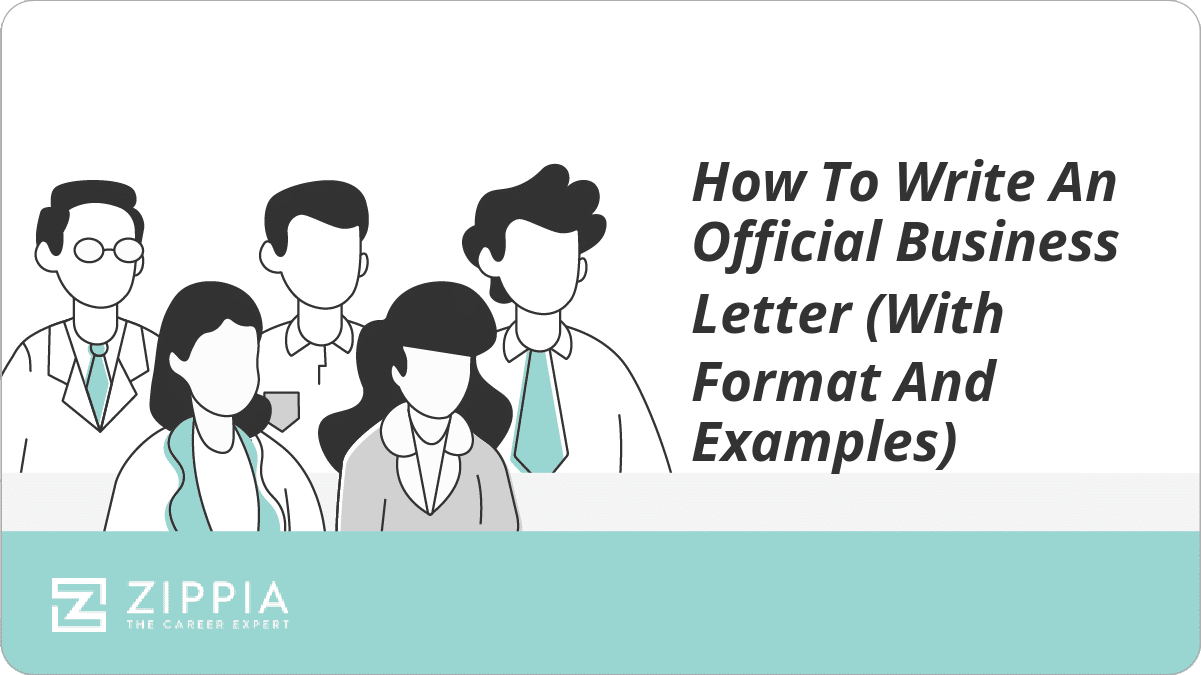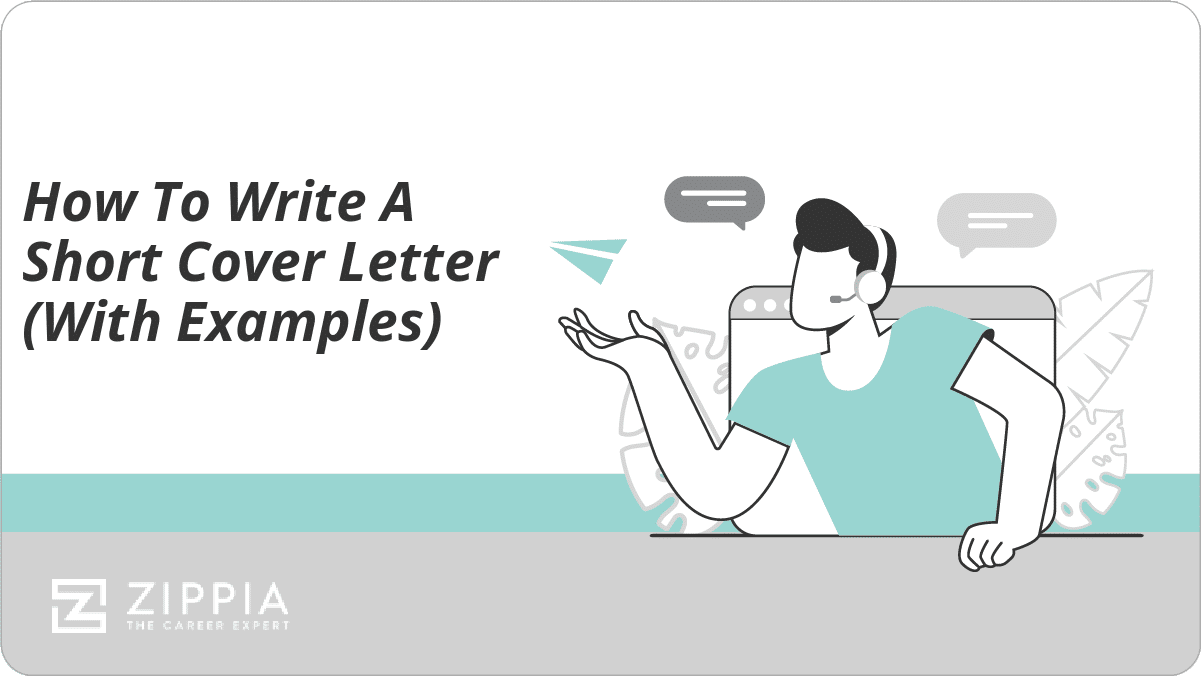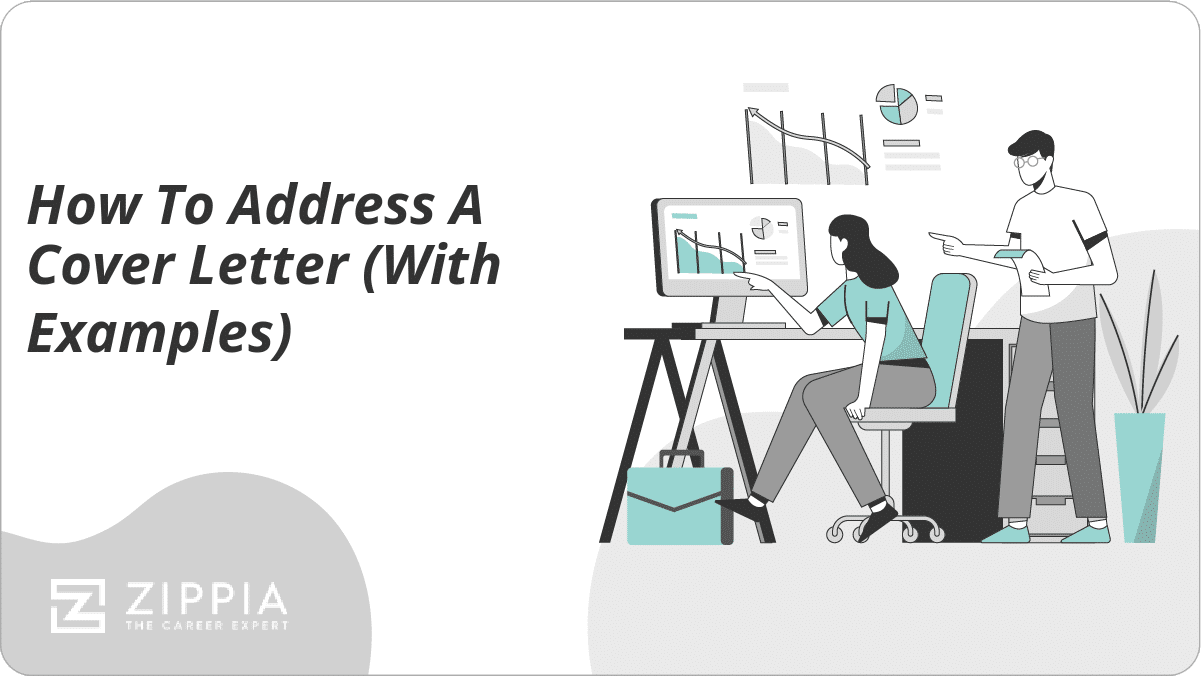- Cover Letter Format
Find a Job You Really Want In
While letter writing may sound a bit old-fashioned to some, it still has plenty of uses within the professional world. Writing an official letter is one of the most straightforward ways to relay important information or express a point. Official letters get the point across professionally while avoiding taking up too much of the reader’s time.
This article will walk you through how to write an official letter with some rules and tips, and it will also give you some letter templates and examples that you can use to help you write your own.
Key Takeaways
-
Your official business letter should include a heading, a greeting, several body paragraphs, a closing, and your signature.
-
Official business letters shouldn’t include pictures, informal language, or anything that you don’t want to be saved in an official document.
-
You can use an official business letter whenever you need to communicate important information in a professional way.

How to Write and Format an Official Business Letter
A professional letter always starts with the appropriate format and style choices. You’ll want to keep the layout very simple and clean to enhance readability and ensure that your letter’s contents are understood.
Keep your margins to a standard one-inch on all sides, and choose a simple font such as Arial or Times New Roman. As far as what sections you’ll need, include all of the following in order:
-
Heading. The heading of your letter should specify who you are, to whom you intend to send the letter, and the date on the day the letter was sent. This serves the function of briefly introducing who you are and safeguarding against possible confusion in sending the letter (e.g., it arrives late, the wrong person opens it, etc.)
Your heading should be structured in roughly the following ways. At the very top, you’ll put your full name, your address, and additional contact information like your phone number and/or your email address.
Beneath this, you’ll put the date on the day the letter was sent. Then, you’ll put the contact information of the person receiving the letter. This includes their full name, their job title, their company, and their company’s address.
-
Greeting. After your heading, you’ll need to include a greeting or salutation to open your letter. Though emails may sometimes be a different story, in letter-writing etiquette, it’s considered impolite to launch into the contents of your letter without a formal greeting.
Your greeting will almost always begin with “Dear” and end with the recipient’s name and a comma.
If you have a formal relationship with the recipient or have no prior relationship with them, use an honorific such as “Ms./Mr./Mx./Dr.” followed by their last name. If you have a less formal relationship with this person, you could use their first name.
Avoid addressing your letter “to whom it may concern,” as it comes across as a bit careless (if you truly have no idea who you’re writing this letter to, it can be pretty difficult to convince the recipient to care about the contents).
-
Body paragraphs. Your body paragraphs are going to make up the contents of your letter. While the other sections are important for official purposes, this section is where your reason for writing the letter comes into play.
In an official letter, you’ll have around three paragraphs, but it may be appropriate to have two paragraphs or four smaller paragraphs on some occasions. Here’s a general breakdown of each body paragraph’s function:
-
First paragraph. In any correspondence, you want to get straight to the point. Immediately tell the recipient why you’re writing and introduce yourself if you’re a stranger. People have short attention spans and prefer clear instructions — help make your letter be more readable by giving them what they want and expect.
-
Middle paragraph(s). The body of your body paragraphs, this is the place where you get into the specifics of your letter. If the recipient needs certain information in order to proceed with your request, make sure all of it is included within these paragraph(s).
If you have a lot of dense info here, it can help to break it down into bullet points rather than paragraphs. A good rule of thumb is that a paragraph shouldn’t exceed 6 lines, or your reader’s eyes may start to blur.
-
Closing paragraph. Finish with a clear call to action and gratitude for the reader taking the time to consider your request. If further correspondence is required, you should also indicate when and how to do so. Make it easy for the recipient to know exactly what’s being asked of them.
-
-
Closing and signature. After you’ve written the body of your letter, you should include a short statement of gratitude to your recipient. This is typically a short sentence thanking the reader for their time, and perhaps including a call to action if you are making a request or inquiring about something.
End your letter with an appropriate closing salutation. Something like “Best,” “Regards,” or “Sincerely” should do the trick. Finally, write your full name at the bottom of the letter.
If you are including other documents along with this letter, be sure to include an enclosure statement after your signature. Simply type “enclosure” or “encl.” followed by the document(s) enclosed.
Once you understand the basics, writing a great business is a simple task.
How to Write the Body Paragraphs of Your Letter
The body paragraphs are the main points of your letter, and they have a loose structure that should be followed.
Keep your opening paragraph short and to the point. Clearly and concisely state why you are writing in the first sentence. Be sure to also give a brief introduction to yourself in the opening paragraph, and if you have never met or spoken with this person before, you may also want to specify who gave you their information or how you found it.
In the next paragraph or paragraphs, go more in-depth into your main point from paragraph one. Help the reader understand your objective and/or give examples that support your point. Give as much detail as you feel necessary, but keep it as concise as people to avoid boring the reader.
If your purpose of writing the letter is to persuade your reader in some way or to get them to take some action, be sure to use your body paragraphs to build a strong persuasive case.
Your closing paragraph should summarize your main point one final time and, if necessary, include a call to action or an indication of the next steps.
Official Business Letter Template and Example
Business Letter Template
Here is a rough, fill-in-the-blanks template utilizing all of these tips and requirements:
[Your full name]
[Your address]
[Your city, state, and zip code]
[your phone number]
[your email address][Today’s date]
[Recipient’s full name]
[Recipient’s job title]
[Recipient’s company]
[Company address]
[Company city, state, and zip code]Dear Ms./Mr./Mx./Dr. [Recipient’s name],
[Paragraph one – introducing yourself and stating your purpose for writing]
[Paragraph two – going into more detail on your point, giving reasons or examples]
[Last Paragraph – wrap up your letter, express gratitude, and specify the next steps]
[Closing salutation],
[Your full name]Enclosure: [the document(s) you’ve attached]
Business Letter Example
Here’s an example following the above template:
Jane Smith
8761 Canal Drive
Columbus, Ohio 43034
(777)-765-4321
janesmith89@gmail.comSeptember 23, 2020
Lisa Murphy
Manager
XYZ Software
1234 Cedar Street
Columbus, Ohio 43035Dear Ms. Murphy,
I’m writing to formally notify you of my decision to leave my position as Senior Graphic Designer at XYZ Software. My last day of employment will be October 7, 2020.
I appreciate the opportunity I’ve had to work with such an incredible team at XYZ Software. It’s been deeply rewarding to create innovative graphics and help to solidify XYZ Software’s visual design aesthetic. I’ve learned so much about professional design, and I’m deeply grateful for the personal growth this position has fostered.
Let me know in the coming weeks how I can best help during this period of transition. I have enclosed a timeline for the completion of my current projects, and I am happy to train any team members on taking over my duties if necessary. I wish you and the XYZ Software team all the best, and I hope that we continue to stay in touch.
Thank you for your time.
Sincerely,
Jane SmithEnclosed:
Project Completion Timeline
Tips for Writing a Professional Letter
Here are some of the best practices for writing a professional letter:
-
Proofread your letter. Make sure that your point is clear and that there are no errors in spelling or grammar. Even small things like not leaving a space between paragraphs can make your letter look very unprofessional.
-
Keep it concise. Respect your reader’s time by only including relevant and necessary info.
-
Use single space lines with a space after each paragraph. This letter format is standard and typically the easiest to read.
-
Print black ink on white paper. Print your letter on standard white bond paper, rather than colored paper or stationery.
-
Left justify your text. It just looks wrong otherwise. People expect their letters (especially official ones) to be left-justified.
-
Use a plain font. 10 or 12 point is the standard font size. Fonts like Arial, Calibri, and Times New Roman are common and generally well-liked.
What Not to Include in a Professional Letter
Official letters should maintain a professional tone, or else they will likely not be taken seriously or not be understood. For these reasons, you should avoid all of the following:
-
Incomplete sentences or run-on sentences.
-
Paragraphs that are too verbose or too terse.
-
“Miss” as an honorific.
-
Pictures or graphics (outside of logos)
-
Emoticons.
-
Informal language.
-
Language that is too formal, and comes across as stiff.
-
Informal stationery (such as cards).
-
Anything you wouldn’t want saved in writing on an official document.
What Is an Official Business Letter?
An official business letter is a formal correspondence sent in a professional context. An official letter can be used to connect with another business, strengthen a relationship with a client, or issue a stern complaint.
Official letters are also used by job seekers all the time in the form of cover letters, letters of interest, and recommendation letters.
What unifies all official letters is a tone of formality and directness of language. Official letters don’t worry about being overly warm — they get to the most important points of the matter in as simple and straightforward a way as possible.
When to Use an Official Business Letter
There are a variety of situations when you might see or need to write an official business letter. These include:
-
Professional reference/letter of recommendation
-
Employment verification
-
Job offer
-
Letter of acceptance to an educational program
-
Communication to stakeholders, clients, or employees
-
Letter of interest
-
Resignation letter
-
Formal complaint
Whenever you need to communicate official information in a professional way, using the format for an official business letter is generally a safe option. It’s usually better to be overly formal than too informal in these cases.
More Official Letter Formats
- Cover Letter Format





